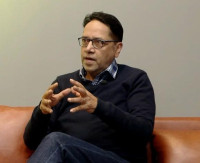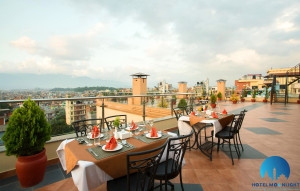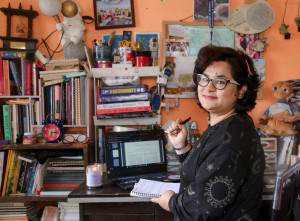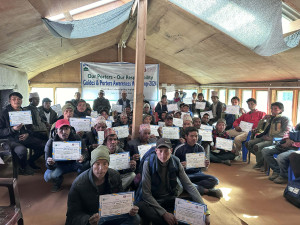Culture & Lifestyle
A year of experimentation for theatres
While the year might have started with uncertainty, Nepali theatre scene ended the year with several barrier-breaking plays.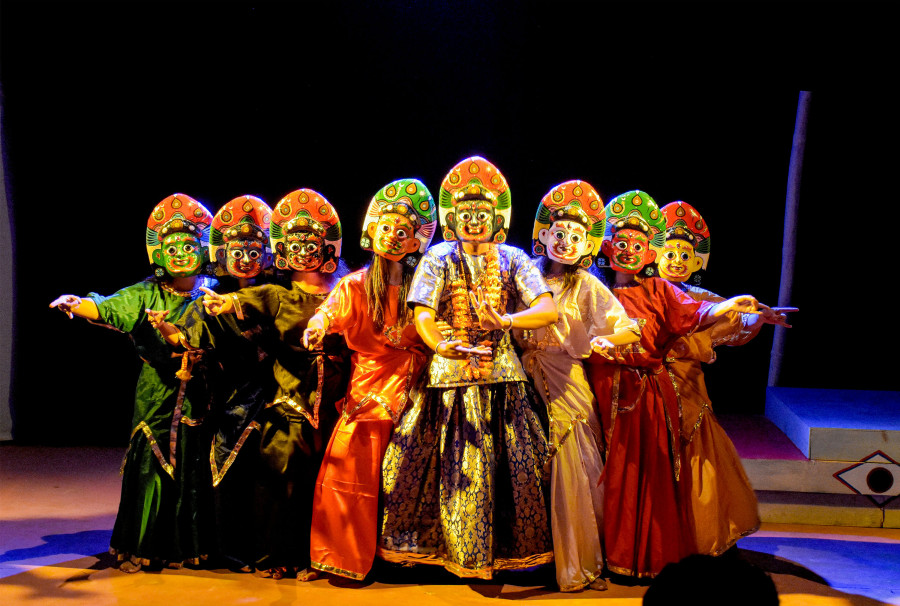
Shranup Tandukar
Nepali theatres have operated on the razor’s edge for decades, and as such, financial instability has become an identifying characteristic for an industry upheld by the sheer passion of individuals. The Covid-19 pandemic was even more destructive for theatres in Nepal as they were forced to close their doors, leaving many struggling to survive. The year started with somewhat renewed hope for theatre owners and artists, but this was quickly dashed as the second wave prompted the country into yet another series of lockdowns from April.
However, Nepali theatres aren’t unfamiliar with navigating around dilemmas, and as the number of vaccinated individuals increased and lockdowns eased, brilliant plays were held one after another. All in all, 2021 marked a year that started with uncertainty but culminated into passionate portrayals of the power of theatre. The Post now looks back at the year 2021, which tested the limits of theatre professionals and pushed them to explore the boundaries of theatre.

‘Anupastit Teen’
‘Anupastit Teen’ was a one-of-a-kind experience for the Nepali audience as it was the first virtual play showcased in the middle of lockdown. Organised by Shilpee Theatre, the play was initially planned to be shown live on stage, but as the second wave started spreading, the play transitioned online and was shown virtually on June 2 through the social media pages of Shilpee Theatre. Based on the play ‘No Exit’ (1944) written by Jean-Paul Sartre, the play dealt with the theme of existentialism as three characters are trapped in a room and are forced to come to terms with their mortality and identity.
As the entirety of the play revolves around three characters trapped in the same room, a virtual rendition created apparent challenges for the actors and the production team. Director of the play Yubaraj Ghimire says, “It was actually incredibly difficult to rehearse and then actually perform the play online, so we did only one showing of the virtual play.” The camera's scope bound the actors, and they were not allowed to move or express themselves freely. Nevertheless, the play attempted to portray as if the actors were together in the same room by using similar props and clever positioning of the actors.
Though the play was eventually shown on stage in front of a live audience from August 3 to August 5, there were still obstacles involved as a prohibitory order restricted theatres to allow only 25 people at a time. However, the experience of navigating these difficulties resulted in a positive outcome as theatres were forced to incorporate digital technology, which they were oblivious to before.
“Nepali theatres have a tendency to shy away from integrating digital technology. However, after doing a virtual play, we realised the potential of online technologies, and as such, we have been uploading recorded versions of our plays online,” says Ghimire. “We believe that other theatres will also follow suit.”

‘Harek Babal Kura’
‘Harek Babal Kura’, an adaptation of ‘Every Brilliant Thing’ by Duncan Macmillan and Jonny Donahoe, was showcased at Kausi Theatre in September this year. As the country was reeling under the devastating effects of the second wave of Covid-19, the idea for a minimalistic play with an innovative approach was borne. “We initially produced the play without any expectations,” says Akanchha Karki, the play's director. “The fear of the pandemic was still looming in the air, but the overwhelmingly positive response to the play was something completely unexpected.”
Sudam CK played the sole actor in the play as he recollected early memories of his childhood and started to write a list of brilliant things in life to cheer his mother, who suffered from depression. However, the play wasn’t a lengthy monologue, and it fused audience interaction with improvisation like never before. Volunteers from the audience came up on stage and acted the roles of a father, lover, teacher, etc., and added a sense of ambiguity. The show made Karki realise that almost everyone wants to come on stage and act, but most of us simply hesitate and lack the courage to do it.
“The play was a type of trial for all of us,” says Karki. “During some showings of the play, audience members would decline to come up to the stage, but the experience allowed the actor [Sudam CK] to become confident in his abilities and improve his improv skills. After all, the show must go on.”

‘Ma’
In October, the genre-defying play ‘Ma’ was staged at Purano Ghar in Sinamangal. As a writer, director, and sole actor of the play, Sulakshan Bharati performed the play after a three-year hiatus from theatre art. However, the long break didn’t seem to dull the actor’s edge but instead seemed to refine it.
The play was a mixture of personal and professional as Bharati played different roles that he had performed in earlier plays. A circle was drawn on the stage, and each time Bharati crossed it, he seamlessly transitioned from one role to another. The circle and its limitations created a paradox for Bharati: he could stay inside the circle and be at peace but not be able to express himself, or he could venture outside and express himself but be buffeted by the chaos that freedom entailed.
For Bharati, the play meant something deeply personal, and paradoxically, the personal became universal as many audience members resonated with his personal dilemma. “We can never come to terms with our true self,” says Bharati. “There are multiple versions of me—kind, evil, caring, uncaring, good, bad, etc. I wanted to show that we can find meaning in the chaos and can choose to be the best version of ourselves—the good version who can contribute to society.”

‘Stop Kiss’
‘Stop Kiss’ is a play originally written by Diana Son in 1998 and set against the background of New York City in the ’90s. Directed by Loonibha Tuladhar and co-directed by Kavita Srinivasan, the play was produced by One World Theatre and staged at Shilpee Theatre from November 25 to December 4.
The play revolves primarily around Callie (played by Ranjana Bhattarai) and Sara (played by Samapika Gautam) as they deal with the repercussions of a horrific assault in response to a kiss they share while roaming the streets of NYC. It was one of the few plays staged in Nepal around queer themes till date. It dealt with homophobia and physical violence against queer people with utmost sensitivity and understanding. Apart from on-stage portrayals of queer themes, the play also encouraged queer representation behind the scenes, as many people involved in the production were from queer communities.
However, the journey towards producing the play was arduous as it took almost 11 months of preparation before the play was finally staged. “There were a lot of low moments during production, and small conflicts arose every now and then between people,” shares Loonibha Tuladhar. “However, the result was worth it. We were able to make people laugh, cry, and become angry. We were able to create something that resonated with the audience, and that’s the power of theatre.”

‘Pachali Bhairab’
Though cultural plays aren't non-existent in Nepali theatres, they are still a rarity. As such, the cultural play ‘Pachali Bhairab’, presented by Bajra Kala Kunja, came as a breath of fresh air. It was staged in Kausi Theatre from November 11 to November 20.
The play centred around the love story of Kirati king Palambar (played by Sudanman Munikar) and Rukmani (played by Anisha Shrestha) from the Newa community. The conflict in the play arises when Rukmani causes Palambar to become the revered figure of Pachali Bhairab. As the play was staged in Kausi Theatre, which is nearby to the actual location of the temple of Pachali Bhairab, the play was able to attract audience members from all walks of life—young and old—through the theatre doors.
One of the interesting aspects of the play was the prominent use of traditional dances instead of dialogues to drive the plot forward. Sometimes, the dance scenes were portrayed on a white background with two shadow figures and other times, the dance scenes were performed on stage by various actors.
“All in all, there were around eight different traditional dances in the play,” says Chandraman Munikar, director, story composer, concept artist, and head of Bajra Kala Kunja. “The incorporation of traditional dances in the play was a deliberate and essential choice. A traditional dance transmits the cultural history and traditional significance of an event visually and better than any spoken dialogue.”




 12.12°C Kathmandu
12.12°C Kathmandu

